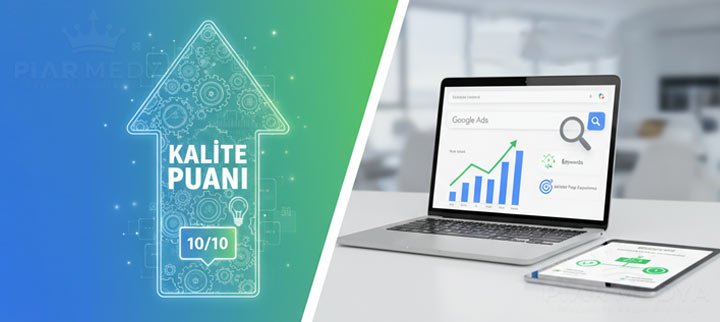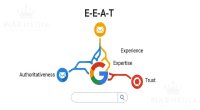A Step-by-Step Ads Quality Score Optimization Guide
Learn the proven 3-stage strategy to improve Google Ads Quality Score and increase ROI. Boost your Quality Score to enhance your performance. You will find answers to all your questions related to topic A Step-by-Step Ads Quality Score Optimization Guide in the continuation of the text.

Google Ads Quality Score: The Golden Key to Lowering Your Ad Costs and Increasing ROI
What is Quality Score and Why is it So Important?
A 3-Stage Strategic Action Plan to Improve Quality Score
Stage 1: The Foundation of Strategy: Keyword and Ad Group Architecture
Stage 2: Mobilize the User: Irresistible Ad Copy
Stage 3: Where You Keep Your Promise: A Flawless Landing Page Experience
Conclusion: Quality Score is Not a Set-It-and-Forget-It Setting
Do you feel like your Google Ads campaign budget is depleting rapidly? Are your cost-per-click (CPC) rates coming in higher than expected? If your answer to these questions is yes, you're not alone in your search for a solution. The secret to success often lies in a metric that is frequently overlooked but determines the fate of your campaign performance: Quality Score.
Quality Score isn't just a number; it's an indicator of how much Google loves your ads and your ticket to ranking higher while spending less. At Piar Medya, we're putting the most critical factors under the microscope to help you manage your ad budget most efficiently.
Google Ads Quality Score: The Golden Key to Lowering Your Ad Costs and Increasing ROI
In our guide, we will unravel the mystery of Quality Score, explain the fundamental dynamics that constitute it, and share proven tactics that will allow you to systematically increase your score and get ahead of your competitors. Remember, effective campaign management is not just about allocating a budget, but about using that budget wisely. If you want to maximize your results with a professional approach, we are always here for you with our Google Ads Agency services.
What is Quality Score and Why is it So Important?
Quality Score is a 1-10 scale that Google uses to evaluate how relevant and useful your keywords, ad copy, and landing pages are to users. A high Quality Score is seen as a reward from Google. The reward is a lower Cost-Per-Click (CPC) and a better position for your ads.
Google's primary goal is to provide users with the most relevant results for their queries. The more your ads serve this purpose, the more Google will support you.
According to Google's official statement, Quality Score is comprised of three main components:
- Expected Click-Through Rate (CTR): Google's prediction of how often your ad will be clicked for your keyword. It's a measure of how engaging your ad is.
- Ad Relevance: This refers to how well your ad copy matches the user's search keyword. Are you directly answering what the user is looking for?
- Landing Page Experience: How useful and relevant the page users land on after clicking your ad is. Is your page fast, trustworthy, and does it deliver the information promised in the ad?
A 3-Stage Strategic Action Plan to Improve Quality Score
Increasing your Quality Score isn't like pressing a single button; it's a process consisting of interconnected optimization steps. Let's break down the process into three main stages.
Stage 1: The Foundation of Strategy: Keyword and Ad Group Architecture
Everything starts with laying the right foundation. The more solid your campaign's structure is, the higher your Quality Score will be.
- Create Granular Ad Groups: One of the most common mistakes is to cram many unrelated keywords into a single ad group. Instead, create small, focused ad groups (thematic groups) for keywords that are very closely related. For example, "men's leather shoes" and "men's suede boots" should not be in the same ad group. This structure allows your ad copy to align perfectly with each keyword.
- Understand Search Intent: When choosing keywords, don't just look at their popularity; analyze the search intent behind them. Is the user looking for information, or are they ready to buy? Understanding the intent correctly allows you to shape both the ad copy and the landing page accordingly.
- Actively Use Negative Keywords: One of the biggest factors that waste your budget is being shown in irrelevant searches. For example, you don't want to show your ad for a paid service to someone searching for "free logo design." By adding words like "free," "used," or "how to" to your negative keyword list, you ensure your ads are only shown to potential customers.
Stage 2: Mobilize the User: Irresistible Ad Copy
You've reached the right audience; now it's time to convince them to click. Your ad copy is the first point of contact between you and the user.
- Maximize Relevance: Be sure to use your keyword in your ad headline and description text. This makes the user think, "Yes, this is the right place," and directly increases ad relevance.
- Focus on Benefits, Not Features: Explain what your product adds to the user's life, not just what it does. Instead of "50GB of Storage," saying "Keep All Your Memories Safe" is much more effective.
- Use Strong Calls to Action (CTAs): Tell the user clearly what you want them to do. Use clear and encouraging phrases like "Get a Quote," "Buy Now," or "Try for Free."
- Leverage Ad Extensions: Ad extensions like sitelinks, phone numbers, location information, and callouts allow your ad to take up more space and provide more information. This significantly increases the expected click-through rate (CTR).
Stage 3: Where You Keep Your Promise: A Flawless Landing Page Experience
The user clicked your ad. But the real test starts now. Your landing page is where you deliver on the promise you made in your ad. A poor landing page experience can nullify all your efforts.
- Ensure Message Consistency: The main headline and keywords you use in your ad copy must also be present in the title and content of your landing page. The user should immediately feel that the link they clicked brought them to the right place.
- Mobile Compatibility is a Must: In a world where the majority of traffic comes from mobile, a non-mobile-friendly page is suicide. Make sure your page works flawlessly on all devices. You can read about the importance Google places on this topic here.
- Optimize Page Load Speed: Users don't like to wait. A page that takes longer than 3 seconds to load will cause you to lose a large portion of your visitors. Getting support from professional web design services for a fast and technically sound website can be a critical investment at this point.
- Be Clear and Understandable: Provide the visitor with the information they are looking for easily. Avoid complex designs and long paragraphs. Your call-to-action (CTA) button should be prominent and easily accessible.
Conclusion: Quality Score is Not a Set-It-and-Forget-It Setting
Google Ads Quality Score optimization is a continuous process of monitoring, testing, and improving. Regularly check the performance of each of your keywords by enabling the "Quality Score" column in your campaigns. Measure which ad copies perform better with A/B tests and continue with the best performers.
A high Quality Score means lower ad costs, better ad positions, and ultimately, a higher return on investment (ROI). Because implementing these strategies requires time and expertise.
If you want to use every penny of your ad budget with maximum efficiency and take your campaigns to the next level, meet the experienced team at Piar Medya. Let's grow your business with professional Google Ads campaign management.






